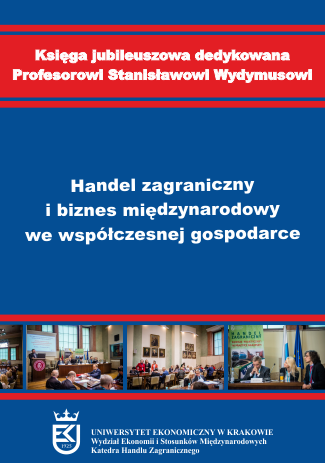System celny Unii Europejskiej wobec wyzwań XXI wieku

Abstract
System celny można sprowadzić do działań określonego państwa, a w przypadku Unii Europejskiej do działań UE i poszczególnych państw członkowskich, regulujących obrót towarowy z zagranicą, podejmowanych na podstawie prawa celnego przy zaangażowaniu administracji celnych. Celem artykułu jest ukazanie funkcjonowania systemu celnego Unii Europejskiej w świetle nowych wyzwań, zarówno wewnętrznych jak i zewnętrznych. W XXI wieku unijny system celny (podobnie jak inne systemy celne na świecie) stoi przed nowymi wyzwaniami związanymi z globalizacją (wzrost wolumenu obrotów towarowych, rozwój handlu elektronicznego, wzrost zagrożeń w skali międzynarodowej). Ponadto system celny UE stoi przez wyzwaniami wewnętrznymi wynikającymi z rozwoju unii celnej.
Keywords
system celny, unia celna, wspólna taryfa celna, unijny kodeks celny
References
- Commission Implementing Regulation No (EU) 2016/1821 of 6 October 2016 amending Annex I to Council Regulation (EEC) No 2658/87 on the tariff and statistical no-menclature and on the Common Customs Tariff, OJ L 294, 28.10.2016.
- Commission Regulation (EEC) No 2454/93 of 2 July 1993 laying down provisions for the implementation of Council Regulation (EEC) No 2913/92 establishing the Commu-nity Customs Code, OJ L 253, 11.10.1993.
- Commission Regulation (EC) No 1875/2006 of 18 December 2006 amending Regulation (EEC) No 2454/93 laying down provisions for the implementation of Council Regu-lation (EEC) No 2913/92 establishing the Community Customs Code, O. J. L 360, 19.12. 2006.
- Commission Regulation (EC) No 312/2009 of 16 April 2009 amending Regulation (EEC) No 2454/93 laying down provisions for the implementation of Council Regulation (EEC) No 2913/92 establishing the Community Customs Code, OJ L 98, 17.4. 2009.
- Council Decision No 2014/335/EU, Euratom: of 26 May 2014 on the system of own resources of the European Union, OJ L 168, 7.6.2014.
- Council Regulation (EEC) No 2913/92 of 12 October 1992 establishing the Community Customs Code, OJ L 302, 19.10.1992.
- Czermińska, M. (2016a). Management of the EU customs union – challenges and activi-ties, Przedsiębiorczość i Zarządzanie, Tom XVII, Zeszyt 8, 173-186.
- Czermińska, M. (2016b). Program e-Customs – nowa jakość usług celnych świadczonych przez administracje celne dla przedsiębiorstw europejskich, Współczesna Gospodar-ka, nr 3, 1-12.
- Czermińska, M. (2016c). The European Union customs system in the 21st century – chal-lenges and trends, Trends in the World Economy. Global Economy at the Cross-roads, nr 8, 39-56.
- DG Taxation and Customs, http://ec.europa.eu/taxation_customs (2.6. 2017).
- European Commission (2013). Proposal for a directive of the European Parliament and the Council on the Union legal framework for customs infringements and sanctions, COM(2013) 884 final, Brussels, COM/2013/0884 final – 2013/0432 (COD).
- European Commission (2016). EU budget. Financial report.
- European Commission (2017). EU Customs Union – Fact and figures, https://ec.europa.eu/taxation_customs/facts-figures/eu-customs-union-unique-world_en, (2.06. 2017).
- Eurostat (2017). http://appsso.eurostat.ec.europa.eu.
- Gwardzińska, E. (2014). Podstawy funkcjonowania prawa celnego w Unii Europejskiej.
- W: I. Tymińska (red.), Procesy obsługi celnej w międzynarodowym łańcuchu do-staw. Warszawa: Akademia Obrony Narodowej.
- Komunikat Komisji do Rady i Parlamentu Europejskiego (2006). Interoperacyjność pa-neuropejskich usług administracji elektronicznej, KOM(2006) 45 wersja ostatecz-na z 13.02.
- Mosiej, G. (2010). System celny w Polsce po wejściu do Unii Europejskiej, Toruń: Wy-dawnictwo Adam Marszałek.
- Naruszewicz, S., Laszuk, M. (2004). Wspólnotowe prawo celne, Warszawa: Wydawnic-two Prawnicze LexisNexis.
- Regulation (EC) No 648/2005 of the European Parliament and of the Council of 13 April 2005 amending Council Regulation (EEC) No 2913/92 establishing the Community Customs Code, OJ L 117, 4.5. 2005.
- Regulation (EC) No 450/2008 of the European Parliament and of the of 23 April 2008 laying down the Community Customs Code (Modernised Customs Code), Dz. U. L 145, 4.6. 2008.
- Rozporządzenie Parlamentu Europejskiego i Rady (UE) nr 952/2013 z dnia 9 październi-ka 2013 r. ustanawiające unijny kodeks celny, Dz. U. L 269, 10.10.2013.
- Waschko, S.(1971). Systemy celne, Warszawa: PWN.
- WTO (2004). Trade Policy Review: European Communities 2004, Report by the Secretar-iat WTO, WT/TPR/S/136.
- WTO (2007). Trade Policy Review: European Communities 2007, Report by the Secre-tariat WTO, WT/TPR/S/177.
- WTO (2009). Trade Policy Review: European Communities 2009, Report by the Secretar-iat WTO, WT/TPR/S/214.
- WTO (2015). Trade Policy Review: European Communities 2015, Report by the Secretar-iat WTO, WT/TPR/S/317.